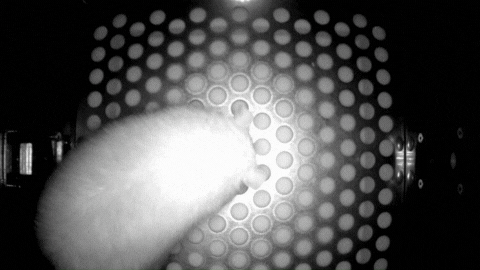We were excited this week to see this new article from Bob Spencer’s Lab at the University of Colorado, published in the Journal of Neuroscience. It’s a great, thorough study that shows strong evidence that laboratory rats and mice are sensitive to the dim red light used in vivariums that animal researchers have long thought they were essentially blind to, and that it might be interrupting their natural circadian rhythms. They back up their conclusions with a laundry list of evidence, including clock gene expression, blood serum hormone measurements, and running wheel activity, but also operant detection of discrete red-band wavelengths using a custom Vulintus OmniTrak system!
To test whether their rats could consciously detect red lights in the far red band, the Spencer Lab asked us to help them create a nosepoke task in which rats would be rewarded for reacting to a quick flash of a light. So we created a Go/NoGo holding task in which the rat held their nose in a port under a light stimulus window, and had to withdraw their nose when they saw the window flash. After training on white light, the rats were presented red lights from a carousel of different red-band emitters. To make sure the wavelength bands weren’t too wide, we used lasers shining on a diffuser to test single-wavelength colors. And the results? The rats could see everything that humans can.
So if we can’t use red work lights in the vivarium without disturbing our animals’ circadian rhythms, how can we work with them during their dark phase? Here at Vulintus this spring, with the little bit of a head start we’ve had since we knew what the Spencer Lab’s data was pointing to, we’ve trying out some prototype goggles for working under infrared lights (which the Spencer Lab showed the rats and mice couldn’t detect). We’ve definitely got more work to do and problems to solve, but hopefully we’ll have something ready for people to test out in vivariums later this summer!


